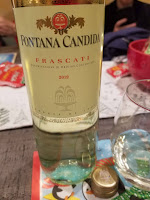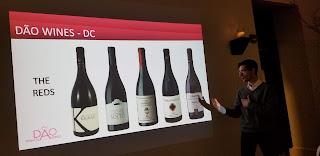Last month BevFluence invited a community of wine enthusiasts to select a supermarket or large beverage retail chain and purchase six wines under $12.99 to review. We chose Wegmans since a new store just opened in Tysons Corner. Here are our selections.
 Fox Run Vineyards 2018 Simmons Vineyard Traminette ($11.99)
Fox Run Vineyards 2018 Simmons Vineyard Traminette ($11.99)Special thanks to the New York Wine & Grape Foundation and their wine seminar “New York's Heritage & Hybrid Wines with Carlo DeVito” for introducing us to this wine (although they featured the 2019, I found the 2018). Whereas Fox Run is located on the west side of Seneca Lake, Simmons Vineyard is located on Keuka Lake - specifically the east bank of the west fork. For this Traminette, expect a tropical and melon aroma, complexity on the palate, lychee, stoney, viscosity, and acids almost catching the sugar (1.8%).
 Emilia Natura 2018 Carmenere ($9.49)
Emilia Natura 2018 Carmenere ($9.49)The grapes are farmed organically in the Colchagua Valley, Chile with 20% of the wine aged 6 months in French oak barrels. The wine expresses blue fruits like plums and blueberries, is concentrated, and provides decent acidity. Wish there was more tannic structure - but at under $10 - that may be expecting too much. The Natura brand is imported into the U.S. by Banfi Vintners.
 Koenig Pinot Blanc ($10.99)
Koenig Pinot Blanc ($10.99)The Koenig winery became the first Kosher wine cellar in France when it opened in Alsace in 1960. Specifically, the vineyards are located in Dambach-la-Ville on the eastern slopes of the Vosges mountains. The wines are certified kosher and made under the supervision of the Beth-Din of Strasbourg, a kosher regulatory council, and today, Koenig is part of the Royal Wine Corp family. This Pinot Blanc starts with limes and stone fruits then giving way to green apples and some weight with appropriate acidity. It's long gone before you realize it.
Hugl Gruner Veltliner ($10.49)
Imagine biting into an Asian Pear where the flesh has been inoculated with small amounts of lemons and sea salt. That is the Hugl GV, dry, minerally, and freshly acidic. The winery is owned and operated by Sylvia and Martin Hugl who specialize in Grüner Veltliner and Zweigelt. In 2013, they combined their two estates, Martin's Hugl family estate and Sylvia's Wimmer family estate, to form Weingut HuglWimmer. Fontana Candid Frascati 2019 ($8.49)
The Malvasia Bianca di Candia (60%), Trebbiano Toscano (30%), and Malvasia del Lazio (10%) grapes are grown in volcanic soils in the Frascati DOC in the province of Lazio. Specifically, in the communes of Frascati, Monteporzio Catone, Grottaferrata, Montecompatri, and Rome. Starts with wildflowers, then think textured lemons sprinkled with a few almonds. The biggest surprise yet.
 Vinos de Arganza Lagar de Robla Mencia Premium 2016 ($9.99)
Vinos de Arganza Lagar de Robla Mencia Premium 2016 ($9.99)This is "wine from the land of Castilla y Leon", more precisely the D.O. Bierzo and close to the region's borders with Galicia (to the west). That means an Atlantic influence and thus cooler and milder conditions and furthermore, the region is protected from extreme weather events by the Cordillera Cantábrica mountains. These conditions ensure that "the local Mencia grapes achieve optimum ripeness to produce lively, fruity and often intense red wines". The Lagar de Robla Mencia Premium was aged in eighteen months in American oak barrels that didn't overwhelm the fruit. Instead, there's a cherry licorice aroma, chalky - then lively fruit (black cherries and blueberries), and chewy tannins. The downside is that the wine comes across as slightly disjointed and not integrated enough and the finish evaporates quickly. But for under $10, it is worthy.







